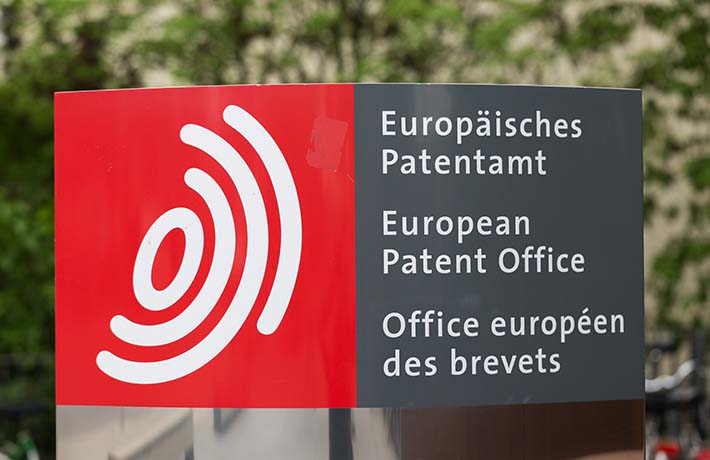12-13-2021 |
Big Developments In European Patent Protection – The Myth of a European Unitary Patent May Soon Become Reality
By: Christopher Proskey

Filing patents in Europe has always been challenging, and unsatisfying – if not downright disheartening. That’s because there has been no way to get comprehensive patent coverage across the European Union.
In the U.S. you can get one patent that covers all 50 States. No such system exists in Europe. Instead, in Europe to get comprehensive coverage you have to “ratify” your patent in each country you want protection in – and there are 38 member countries. The costs and complexity essentially eliminates the possibility of getting comprehensive protection for innovations across Europe for most companies and for most innovations.
Now, don’t get me wrong, we file a lot of European patents. However, those clients are often forced to choose their most important countries (e.g. Germany, United Kingdom, France, Italy…) while leaving the rest of the EU countries unprotected. This leaves a patchwork of protected and unprotected areas across Europe.
This inability to easily secure comprehensive European protection has led many companies to forego European protection altogether.
That is until recently… significant steps have been taken to make a single patent that covers Europe a (welcomed) reality.
All companies with a portfolio of patents should take note and take this opportunity to consider their European Patent Filing and Prosecution Strategy.
NOTE: The following information is provided in association with our friends at EIP.
The “Unitary Patent in Europe” and the “Unified Patent Court”
The project to establish a Unitary Patent in Europe and a Unified Patent Court to handle patent infringement litigation for European patents is underway again. After several years’ further delay due to constitutional challenges in Germany, this project, nearly 50 years in the making, is again resuming. The Preparatory Committee expects the Court to open for cases in mid-2022.
This briefing provides an overview of the system and the current status, ending with the actions that need to be considered now and in the near future in relation to existing European patent portfolios.
The UPC and Unitary Patent
There are two aspects to the project – the creation of a European Patent with Unitary Effect (“Unitary Patent”) having unitary effect in participating EU member states, and the establishment of the Unified Patent Court (“UPC”) which will be responsible for patent litigation in respect of both Unitary Patents and European patents for which unitary effect is not requested (“classical” European patents).
The Unitary Patent will be a single patent right covering all EU member states which have ratified the agreement at the patent grant date. The request to convert the European patent into one having unitary effect, instead of a bundle of national rights in the participating countries, is made by the proprietor on grant of the patent by the European Patent Office (EPO).
Ultimately, the UPC will hold exclusive jurisdiction over litigation in respect of patents covering EU member states which were prosecuted through the EPO. However, for a lengthy transitional period of at least seven years, national courts will also have jurisdiction over “classical” European patents, and it will be possible to opt such patents out of the jurisdiction of the UPC altogether. The UPC will have no competence in respect of patents granted by national patent offices.
EIP has established patent litigation teams in UK and Germany, and is well placed to advise on pan-European litigation strategies whether including the UPC or not.
Current status
Germany has recently passed legislation which will allow Germany to ratify the UPC Agreement (the ‘UPCA’). The UPC will come into existence on the first day of the fourth month after that ratification.
However, Germany will not ratify the UPCA just yet since the court is not yet ready to open its doors – before ratification of the main agreement, the Protocol on the Provisional Application of the UPCA (the PAP-Protocol) needs to enter into force, which requires 13 states, including Germany, France and Italy to ratify the PAP-protocol. Currently, 12 of the necessary 13 states have ratified the PAP agreement; the required further ratification is expected imminently from Austria. The UK has withdrawn from the UPCA and will not participate at all.
Once the PAP-Protocol enters into force, the UPC will be in a position to complete the preparations for the Court to open for business, which the Preparatory Committee has indicated will require a provisional application period (PAP) of approximately eight months. Germany is therefore expected to ratify the main agreement approximately 4 months after the PAP begins (in Spring 2022 if the expected timeline is followed, although this is not guaranteed).
Immediate actions
Pending European Patent Applications if the Unitary Patent is of Interest
The Unitary Patent is only available in respect of European patents that are granted after the UPCA comes into force. If the Unitary Patent is of interest, you may wish to slow down the prosecution of any pending European applications so that the option is available.
Opting Out Existing Patents and Applications
If a client wishes some or all of their European patent portfolio to remain outside the jurisdiction of the UPC, then it will be necessary to file an opt-out request. This is best done in a “sunrise period” that will run a few months before the UPCA comes into force and which is expected to begin in Spring 2022. Careful consideration will need to be given to this choice.
Meet the Author:
Christopher Proskey is Co-Chair of Brown Winick’s Intellectual Property Practice Group.
If you’d like assistance with managing your patent portfolio or evaluating/re-evaluating your European patent filing strategy please do not hesitate to reach out to Chris.
